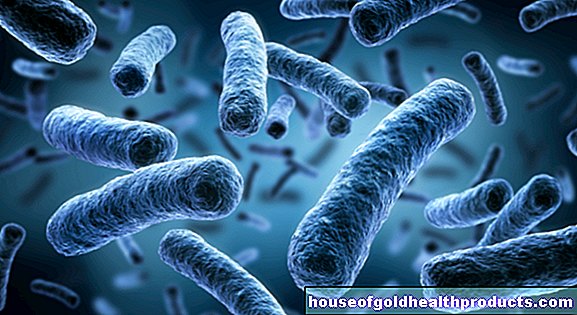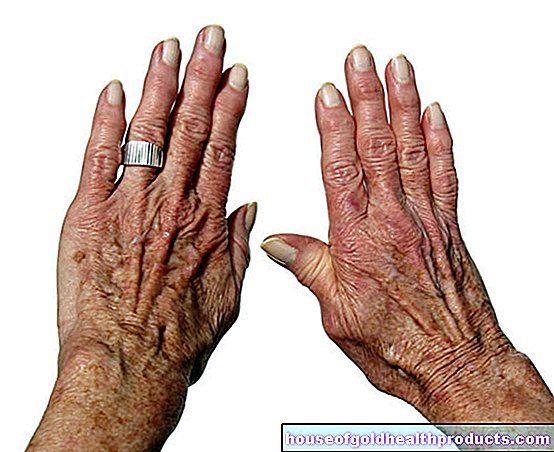Coronary arteries
Eva Rudolf-Müller is a freelance writer in the medical team. She studied human medicine and newspaper sciences and has repeatedly worked in both areas - as a doctor in the clinic, as a reviewer, and as a medical journalist for various specialist journals. She is currently working in online journalism, where a wide range of medicine is offered to everyone.
More about the experts All content is checked by medical journalists.The coronary arteries (coronary arteries, coronary arteries) are the blood vessels that lie directly on the heart and supply the non-stop heart muscle tissue with oxygen and nutrients. They arise from the aorta immediately after it leaves the left ventricle and wind around the heart to encompass every area of the musculature. Read everything you need to know about the coronary arteries!
What are the coronary vessels?
The coronary arteries surround the heart muscle in a ring shape. They are named after the location of their main trunks in the coronary furrow of the heart - a ring-shaped depression on the outside of the heart, which marks the border between the two atria and the heart chambers.
There are two major coronary arteries that branch out as they go:
- right coronary artery: short RCA (right coronary artery) or ACD (arteria coronaria dextra)
- left coronary artery: short LCA (left coronary artery) or LMCA (left main coronary artery) or ACS (arteria coronaria sinistra)
The right coronary artery (RCA cardiac vessel) runs horizontally around the right half of the heart and supplies most of the right heart and the rear part of the septum (partition between the right and left halves of the heart). As the ramus interventricularis posterior (RIVP, RPD) it runs down the back of the heart to the apex and supplies the posterior wall of the left ventricle. Side branches supply the right atrium as well as the sinus and AV nodes, which are important for stimulation generation and conduction.
The left coronary artery is larger than the right and divides into two main branches (with secondary branches): the Ramus interventricularis anterior (RIVA or left anterior descending coronary artery - LAD) and the Ramus circumflexus (RCX). The RIVA heart vessel (LAD heart vessel) descends on the front of the heart between the right and left ventricles and supplies the left ventricle and a narrow strip of the right ventricle. The smaller branch (RCX) supplies the left atrium, pulls towards the posterior wall of the left ventricle and runs diagonally across its outer wall.
The two coronary vessels with their branches are in contact via numerous connections (anastomoses). However, if one of the branches is blocked, these cannot form an adequate bypass circuit - blocking a coronary artery always means a heart attack.
The coronary vessels are individually different in size. For example, in some people, the left coronary artery supplies almost all of the heart.
What is the function of the coronary arteries?
The coronary vessels supply the muscles of the heart with oxygen and all important nutrients. Each coronary artery has a specific area that it supplies (some areas of the heart are also supplied from more than one side). Between heartbeats, when the heart muscle relaxes (diastole), blood flows from the aorta into the coronary arteries.
Where are the coronary vessels located?
The coronary arteries lie under the epicardium, the inner sheet of the pericardium (pericardium). They arise briefly from the aorta, its exit from the left ventricle, and spin around the heart in a wreath-like manner.
What problems can the coronary arteries cause?
If the coronary arteries become increasingly narrow due to fat and calcium deposits (arteriosclerosis), this impairs the supply of the heart muscle with oxygen and nutrients. Doctors then speak of coronary heart disease (CHD). It usually manifests itself in pain and a feeling of pressure in the chest (angina pectoris). In the further course, secondary diseases such as heart failure, cardiac arrhythmias and heart attacks can occur. A heart attack usually occurs when one of the coronary arteries becomes partially or completely blocked by a blood clot.
Tags: parasites Menstruation book tip





























